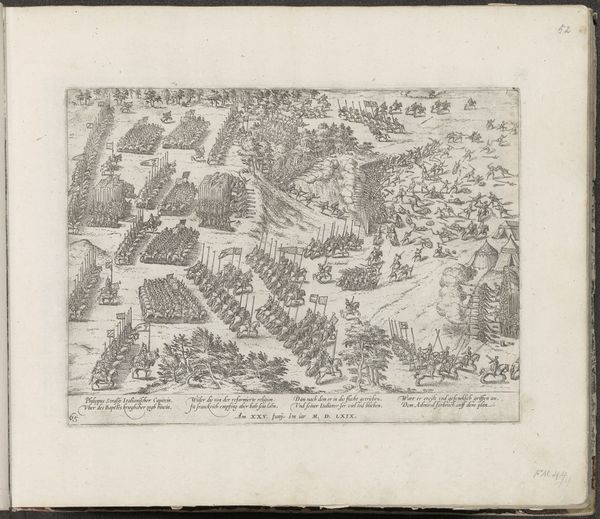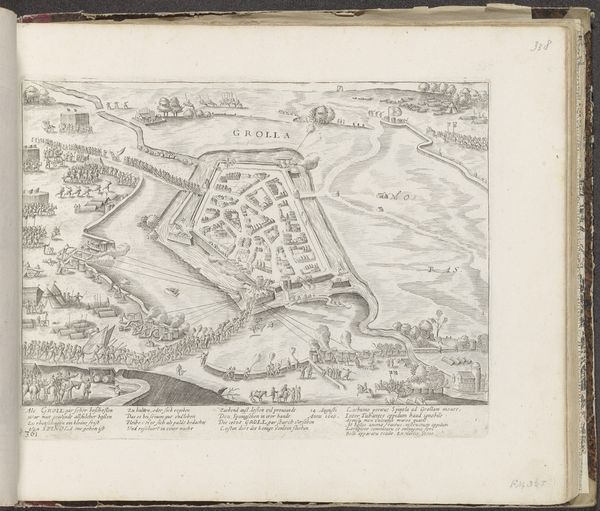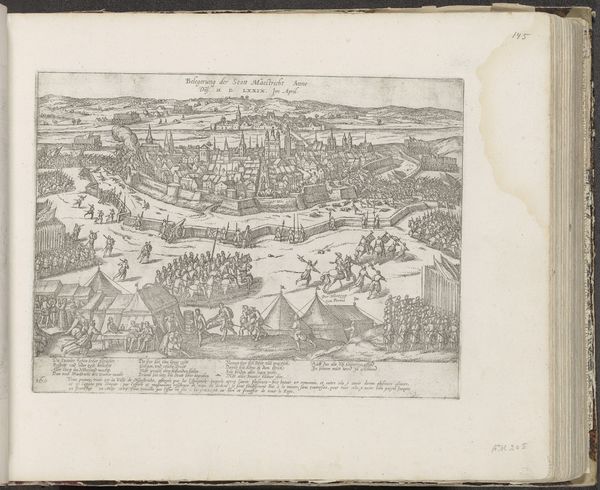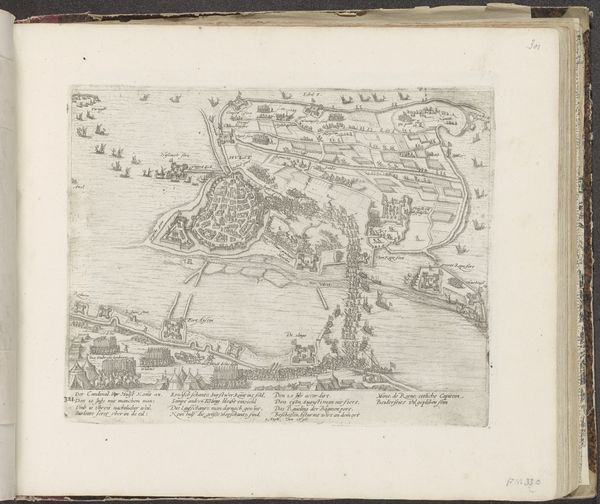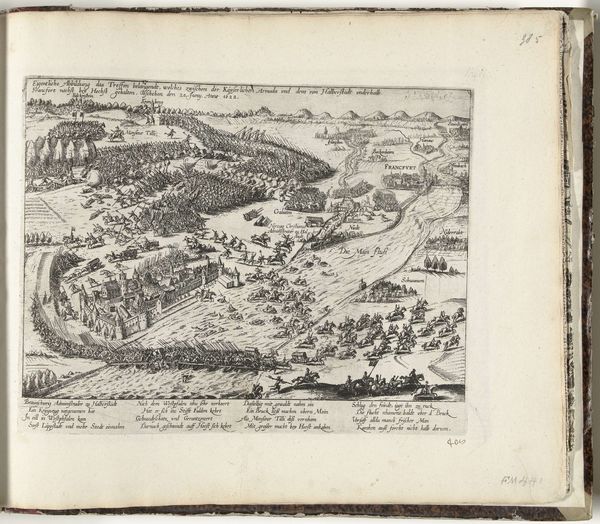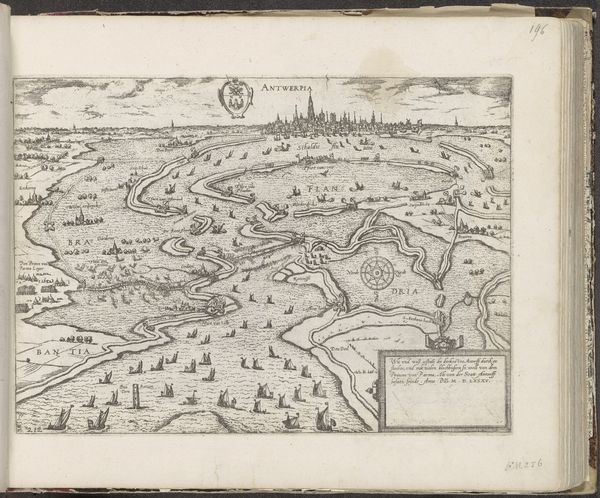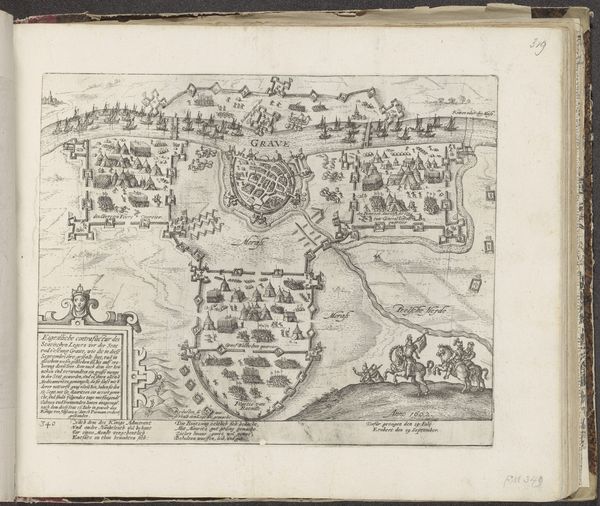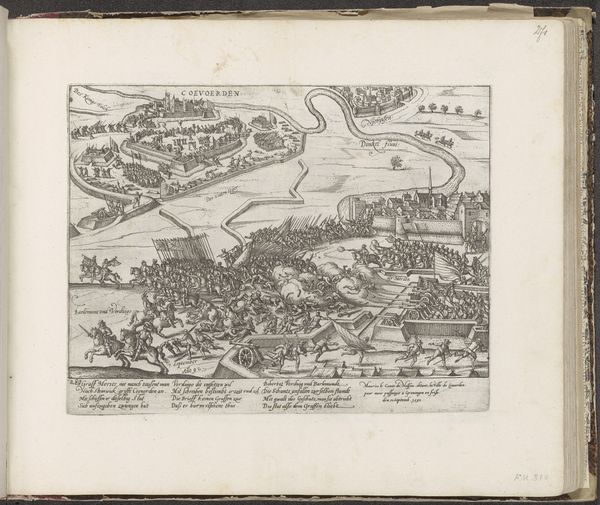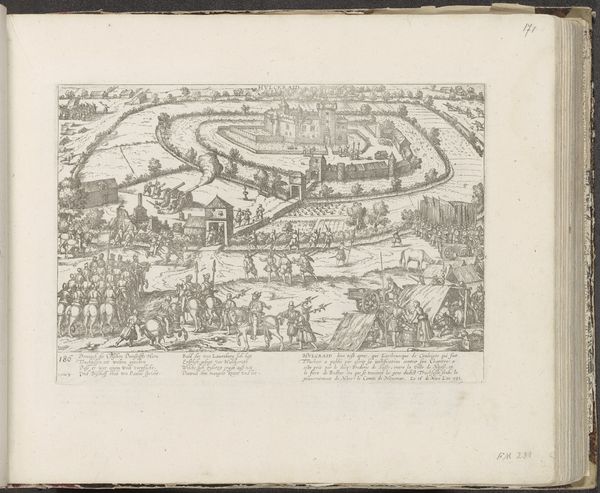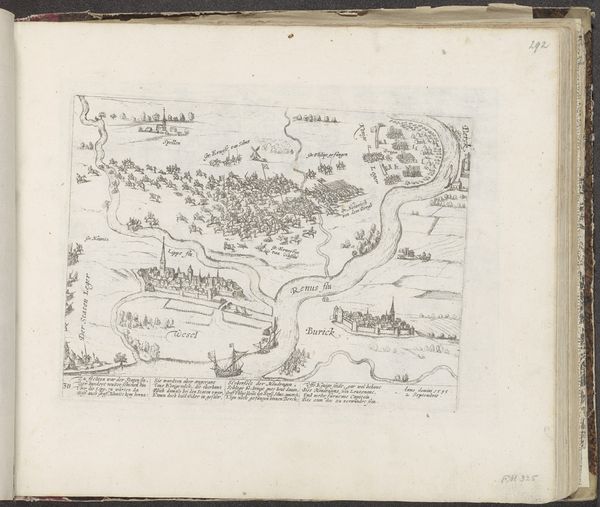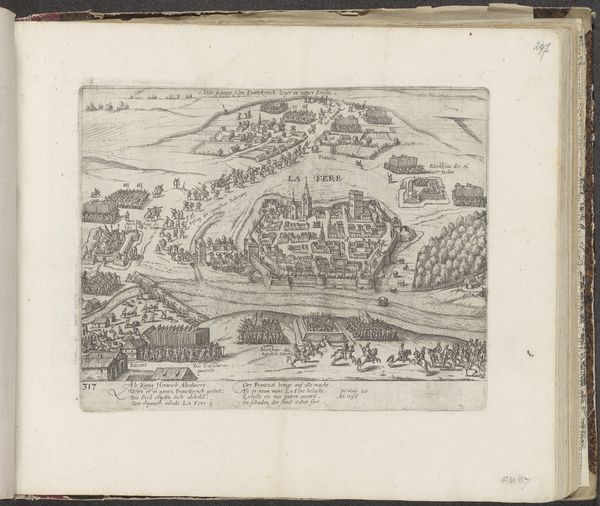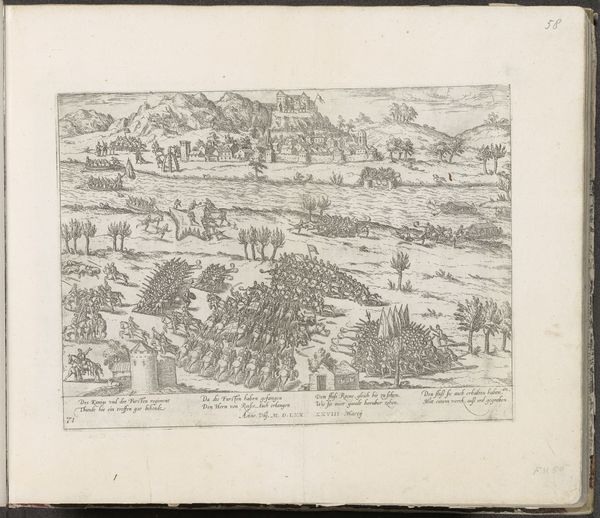
drawing, print, paper, ink, engraving
#
drawing
#
pen drawing
# print
#
landscape
#
mannerism
#
figuration
#
paper
#
ink
#
line
#
cityscape
#
history-painting
#
northern-renaissance
#
engraving
Dimensions: height 213 mm, width 275 mm
Copyright: Rijks Museum: Open Domain
Curator: What a striking composition! At first glance, the dense, almost claustrophobic, rendering of the city gives a real sense of the pressure of the siege. Editor: Indeed. What we're seeing here is "The Siege of Rouen, 1591," an engraving created by Frans Hogenberg between 1591 and 1593. It resides here at the Rijksmuseum. What immediately grabs my attention is its representation of warfare. The city is positioned almost passively at the top of the picture with Saint Catherine's Hill directly in conflict at the bottom, covered in soldiers. Curator: Exactly! The figures on the hill appear somewhat frantic, locked in some battle, while the besieged city remains still—at least from our vantage point. This visual division might represent a deep societal fracture. You see these clusters of human figures as if swarming and scurrying. Editor: The engraving offers a powerful lens to examine 16th-century military strategy and urban conflict. Hogenberg seems to prioritize documentation of the layout. You see cannons arranged so strategically on Saint Catherine's hill which itself is a point of contestation—as much a psychological stronghold as it is a military one. Curator: I agree. Visually the hill becomes a kind of microcosm of the tensions, each tiny, hatched line and stroke revealing individual movement in a dance of conflict, death, strategy, and the exercise of will. The figures at war are all facing inward; the war in the people is facing in, a civil strife, brother versus brother. I wonder if the artist did this to explore psychological depth or simply show action, dynamism, chaos. Editor: It highlights the complexities of the French Wars of Religion. Rouen, a major port city, was predominantly Catholic, yet held a significant Protestant, or Huguenot, population. We should note here that Hogenberg was based in Cologne and fled religious persecution in the Netherlands so it makes sense that his renderings of conflict seem to center the psychological and ideological import of these tensions. Curator: That adds a layer of intrigue, especially regarding whose story Hogenberg chooses to depict through imagery. In art historical memory, especially rendered via engraving, the politics of representation cannot be dismissed. Editor: Well, seeing the scene analyzed through the eyes of both historical and iconographical context gives me a greater insight to Hogenberg’s approach to picturing not just conflict, but a culture and state fractured by ideological struggle. Curator: Absolutely. It's in these tiny lines that reveal huge insights on how images communicate culture across centuries.
Comments
No comments
Be the first to comment and join the conversation on the ultimate creative platform.


